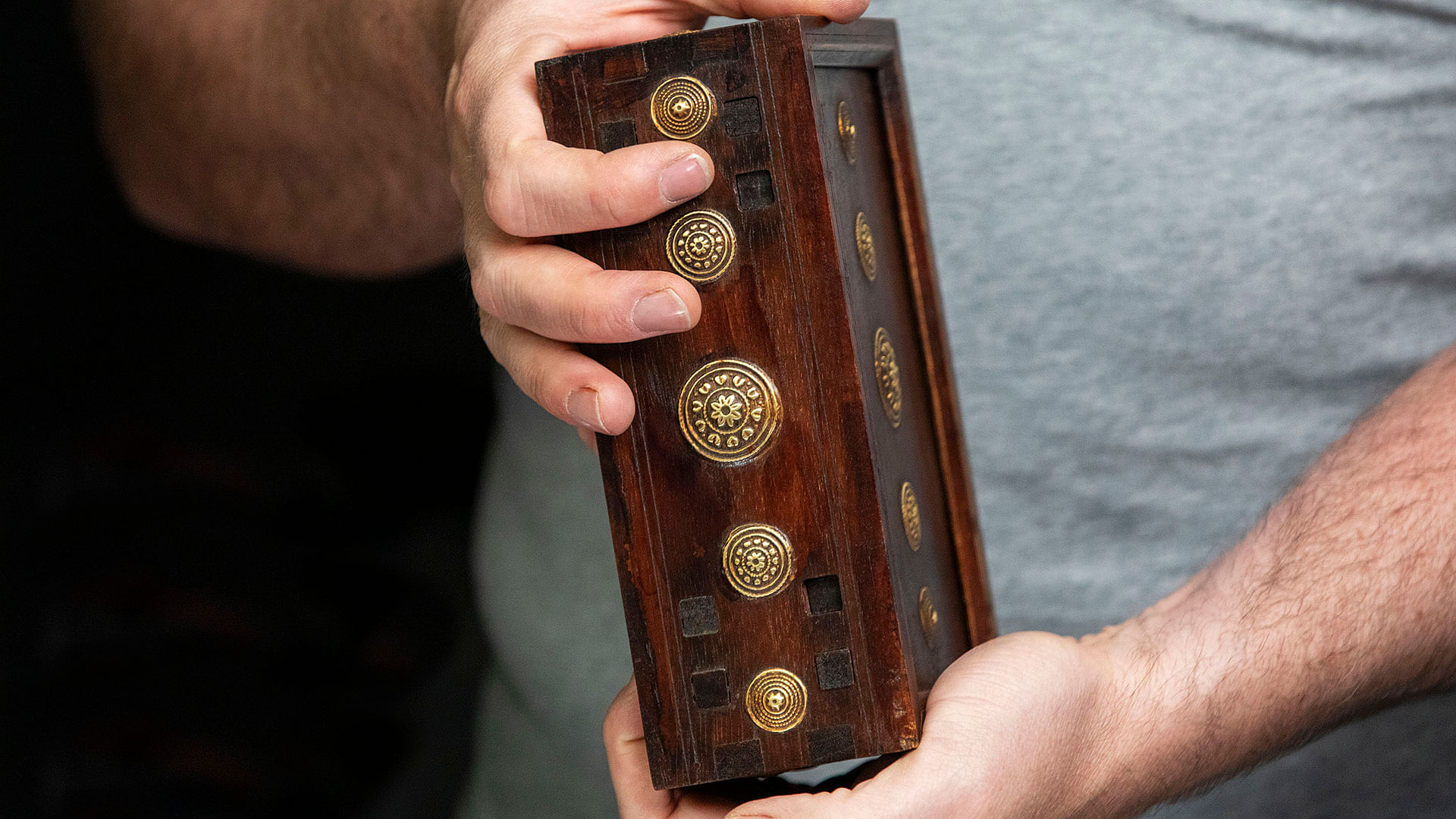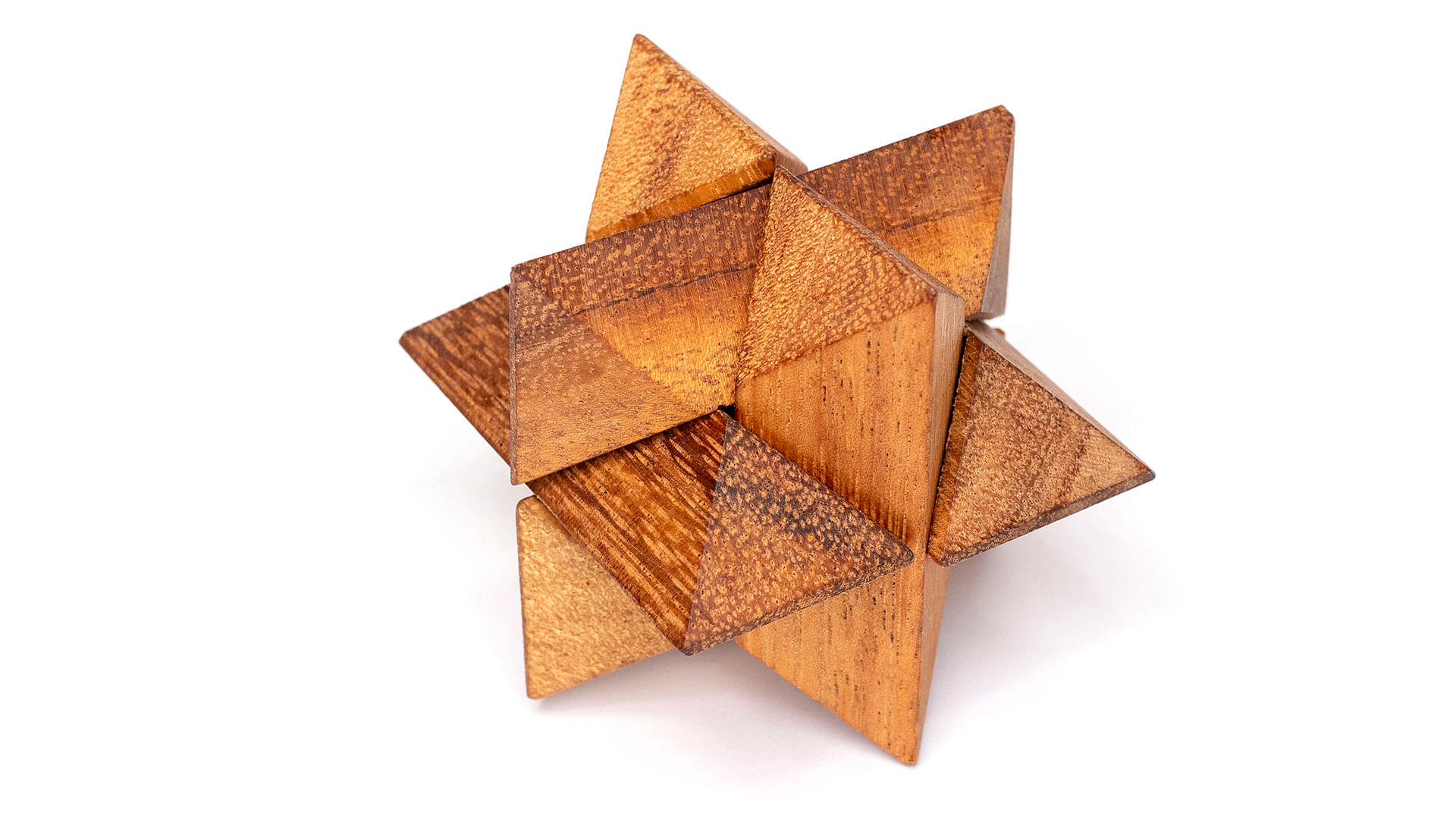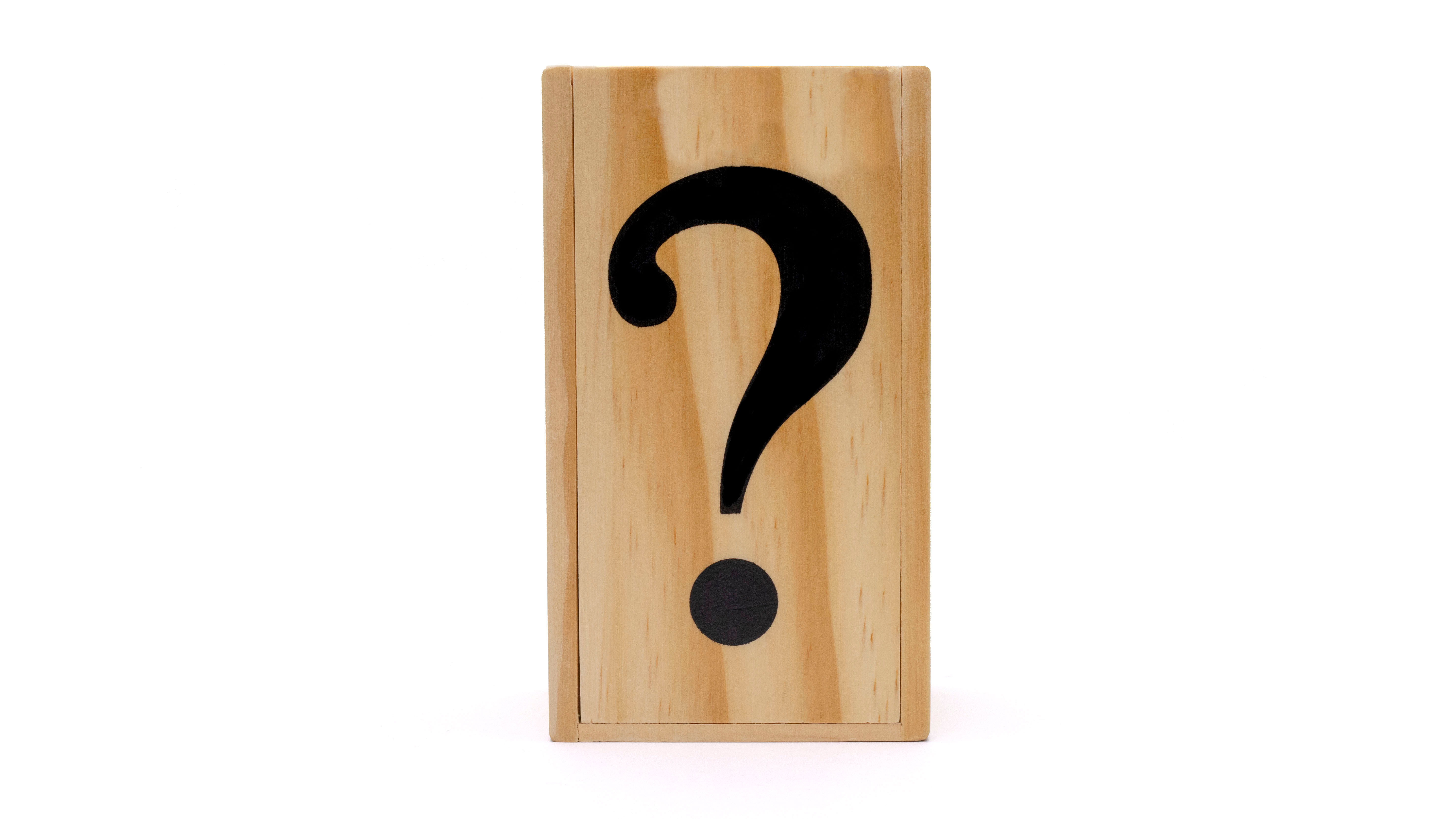3 Ways to Solve a Wooden Puzzle
Train your brain and keep your mind sharp by experiencing the many benefits of solving puzzles and brain teasers. We have a variety of best selling wooden puzzles for you to choose from. And now, you can learn how to solve these fun puzzles.

While puzzles might make you smarter, there are still some tricks to making them easier to solve. Here are 3 ways to solve a wooden puzzle like a jigsaw puzzle, japanese puzzle box, puzzle cube, snake cube puzzle and more.
Baby Steps
Trying to solve a 100-step puzzle box or 5,000 piece jigsaw puzzle all at once can be overwhelming. Instead, break the wooden puzzle down into different smaller sections or steps. Look for clear starting points or, in the case of jigsaw puzzles, smaller parts of a larger image that can be crafted first.

If there are a variety of different pieces like our Polar Star Puzzle, make sure to lay them out clearly and visibility in front of you. You want to be able to see the puzzle both from above and the side. For puzzles with a large number of pieces, you may also want to group the puzzle pieces by color, shape or size.
Organizing pieces in small manageable steps is particularly helpful for hard jigsaw puzzles. For example, large bodies of water or snow in a jigsaw puzzle can be a headache for puzzlers. Instead of just grouping all the “blue” or “white” pieces, try to group them by shade (light or dark) or shape.
Get Physical
While wooden puzzle boxes might look seamless from the outside, they all possess some sort of moving mechanism that allows you to open them. And, it won’t always be obvious. You may have to slide, squeeze, shake or even smack the pieces. But, it’s important to note that you should never have to use any force to open premium puzzles and brain teasers.
Good starting points are typically places with contrast or discrepancies. For example, a point where two different colors come together might indicate where a secret hinge or lock is located. A noticeably shorter piece may indicate that it’s meant to be slid or removed.
You should also keep an eye out for notches, gaps or hinges. But, remember, some challenging puzzles, like our Trickbox Puzzle Box, might require you to do the opposite of what you think makes sense.
Dovetail Puzzle Boxes are a perfect example of a puzzle that challenges your brain in different ways. The solution to a Dovetail Puzzle Box requires you to slide the two pieces apart from each other. However, just trying to pull and tug won’t get you anywhere. Because you have to first slap it against your hand (like you're giving it a high-five) to dislodge the strong magnet holding the pieces together.

Be Patient
Remember, puzzles are supposed to be a fun and relaxing way to practice mindfulness. While it can be easy to get frustrated when solving a challenging puzzle for adults. It’s important to remain patient.

While some wooden puzzles may only have one or two steps, like our Mystery Chest Puzzle Box, others can be a bit more complicated. Puzzles like our Japanese Puzzle Boxes and Voidlock can require anywhere from 10 to more than 300 steps to solve.
There are no shortcuts when solving puzzles. Don’t get stuck trying to solve one section of a puzzle. Either move on to a different section or take a break. You can even try moving on to something else completely different for a little while like one of these mind blowing brian teasers with solutions.
BONUS TIP: Don’t Get “Edged” Out
 One of the most common beginner strategies for solving a jigsaw puzzle is to locate the edge pieces. The problem with this is that some puzzle makers will actually use what’s called a “line cut”–especially in more difficult puzzles. Essentially, they’ll align a straight edge (like the side of a building) with a cut to give the illusion that it is a straight edge piece
One of the most common beginner strategies for solving a jigsaw puzzle is to locate the edge pieces. The problem with this is that some puzzle makers will actually use what’s called a “line cut”–especially in more difficult puzzles. Essentially, they’ll align a straight edge (like the side of a building) with a cut to give the illusion that it is a straight edge piece
To find out if a puzzle piece is an edge piece or not, try this helpful strategy. Stand the piece on its edge and get down to eye level with it. If you see that it doesn’t align with the table or rocks back and forth a little, then it might not be an edge piece.
